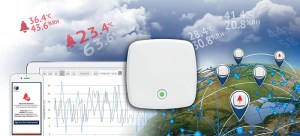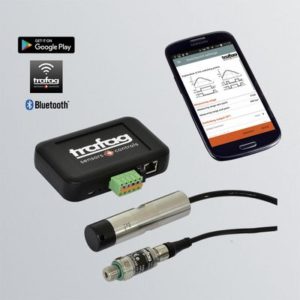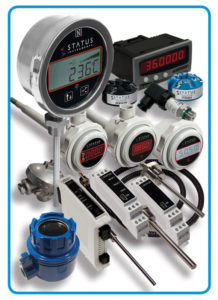 The ability for manufacturers to quickly and cost-effectively monitor power consumption and power quality is crucial in helping reduce energy use. Will Darby of Carlo Gavazzi UK, outlines the benefits to be had from an appropriate metering and power quality monitoring strategy.
The ability for manufacturers to quickly and cost-effectively monitor power consumption and power quality is crucial in helping reduce energy use. Will Darby of Carlo Gavazzi UK, outlines the benefits to be had from an appropriate metering and power quality monitoring strategy.
Reducing electricity use is good for business and for the environment. But for many manufacturers electricity use is not optimised because managers do not have sufficient information to make informed decisions.
The old adage – you cannot manage what you don’t measure – is certainly true when it comes to electricity consumption. The simple function of installing metering on all of the primary energy-consuming plant in a factory or manufacturing facility will provide managers with a huge amount of useful data; data that can be used to optimise the way a plant is run.
Meters such as Carlo Gavazzi’s EM24 3-phase energy analyser are perfectly suited to both active and reactive energy metering of individual items of machinery with a high power consumption; In addition to manufacturing plant, HVAC equipment, lighting circuits, computer servers and other power-consuming auxiliary equipment should all be monitored. This type of single phase application can be metered by Carlo Gavazzi’s EM111 and EM112 1-phase energy analysers.
To monitor the system, record and transmit data, the energy analysers can be connected to Carlo Gavazzi’s VMU-C Energy Management module. This is a micro-PC which is pre-installed with a web server. This smart energy monitoring solution makes it a simple task to determine energy usage of both individual items of equipment and the production facility’s overall energy usage, either in the facility or remotely, to see how much power is being used, where and when, both as real time consumption and as historical data.
For larger manufacturing facilities with multiple items of plant a centralised system will allow all of the collected data to be pooled to help paint a bigger picture of energy use patterns.
The data will also enable a business to determine how much of its existing supply is being used; allowing it to confidently invest in new machinery or in expanding production. Or, it might enable a business to discuss a reduction in its energy tariff.
In addition to the quantity of power, another key element of an energy management strategy for businesses consuming large amounts of energy should also be to improve the quality of power.
For some businesses, power quality is an unknown. Yet power quality impacts the ability of electrical equipment to efficiently consume the energy being supplied to it.
 There are three principal power quality issues:
There are three principal power quality issues:
- Harmonic voltages and currents, which are introduced by electrical devices. These distort the wave form and increase power usage, cause over heating of motors and as a consequence premature failure.
- Voltage instability, which is usually a side effect of electrical supply from the network. A high voltage is detrimental to equipment performance and longevity while a low voltage can cause brown-outs
- Poor power factor; this is often caused by inductive loads from motors, generators and transformers etc. A poor power factor is when the power factor is less than near unity, which results in much higher losses in the supply system.
All of these issues can result in higher energy usage and consequently higher energy costs, higher maintenance costs and problems with equipment instability and failure. Each of these issues can have serious consequences for any business and can result in potentially catastrophic failures. They are also, generally, relatively easy to resolve once a manufacturer is aware of the problem.
To enable manufacturers to easily assess the quality of power in their facility, Carlo Gavazzi has developed the WM20, WM30 and WM40 smart power quality analyser range. These can be used in a wide number of applications, ranging from building automation (for monitoring of the mains or sub-metering) to industrial automation (for monitoring variables and consumption of a single machine, or for the mains of an entire manufacturing facility). Made up of three components, the base unit provides a wide backlit LCD display and touch-panel to program, auto-scroll of measurements display and configure parameter values. It also displays virtual alarms and can accommodate accessory modules, for digital outputs and interfaces for faster communications using Modbus, BACnet over RS 485 or TCP/IP and Profibus, along with superior functions such as load monitoring measurement and comprehensive alarm management; all in a compact plug-and–play modular format that streamlines installation and simplifies inventory management.
The WM units can also be connected to Carlo Gavazzi’s VMUC web based monitoring system to provide a complete energy management solution for both single and multi-site installations.
Using these simple metering and monitoring tools will enable a manufacturing business to analyse and trend electricity usage and to proactively and predictively manage electricity use in a single facility or even across an entire site. Having detailed power consumption data will help managers realise savings by making it easier to see when and where power is being consumed. It may, for example, give them sufficient information to consider shifting the timing of power intensive operations to take advantage of cheaper electricity tariffs.
Of course, electrical distribution systems evolve over time as equipment is added or replaced and manufacturing processes change. Monitoring and metering should not be seen as a ‘nice to have’ but as a fundamental tool in enabling a facility to be running efficiently. By continuously and actively monitoring power consumption and power quality a manager will be able to ensure that electrical systems are working efficiently and effectively to help them deliver benefits to the bottom line.
For more information on Carlo Gavazzi’s energy management solutions go to www.carlogavazzi.co.uk
 DJB Instruments UK Ltd is pleased to announce the launch of a new version of their popular miniature triaxial accelerometer, the AT/10 IEPE type and AT/01 charge type. These low mass miniature triaxials have up till now been limited to adhesive mount use, however the new design accommodates a tapped base for removable stud mounting.
DJB Instruments UK Ltd is pleased to announce the launch of a new version of their popular miniature triaxial accelerometer, the AT/10 IEPE type and AT/01 charge type. These low mass miniature triaxials have up till now been limited to adhesive mount use, however the new design accommodates a tapped base for removable stud mounting. Instrumentation Monthly Test | Measurement | Control
Instrumentation Monthly Test | Measurement | Control



















